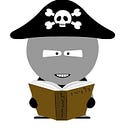“Your Favorite Children’s Books?”
America’s Childhood Classics
Johns Hopkins University Press, 368 pp.
When surveys are taken and people are asked to name their favorite book, they frequently mention a children’s book. Grahame Greene suggests a reason for this: “It is only in childhood that books have any deep influence on our lives. . . . What do we ever get nowadays from reading to equal the excitement and the revelation of those first fourteen years?”
Noting that, I and others have made surveys where we asked various individuals (Ronald Reagan, Carol Burnett, Jack Anderson, Gore Vidal, bricklayers in the South, librarians in the Midwest, and hundreds of others), “What was your favorite children’s book?” Mentioned most often are the enduring classics of the Golden Age — those stories about Tom Sawyer, Huckleberry Finn, Dorothy from Kansas and Oz, Rebecca of Sunnybrook Farm, Meg and Jo and Beth and Amy, and their contemporaries.
Like childhood itself, America’s children’s classics are what we have in common. They are part of the fabric of our culture — the way Tom Sawyer whitewashes a fence, the desire to run away (like Toby Tyler) and join the circus, the description of someone as a “pollyanna.”
One measure of that influence is the way these books have leapt from the printed page and become incarnated in a thousand different forms. The Wizard of Oz is an example. There are gift stores filled with Oz coffee cups and ashtrays and objets of all kinds — even a postcard from Seattle where the Tinman is sunbathing on a beach while the rain pours down (the caption is “Oil!”). “There’s no place like home” or “Toto, I have the feeling we’re not in Kansas anymore” are references nearly everyone comprehends. Judy Garland’s and Frank Baum’s story provide a kind of shared conversational shorthand which, in another era, might have come from the Bible or Greek mythology.
Other such incarnations must include Johnny Weismuller’s famous yell in Tarzan matinees and the Little Lord Fauntleroy suit. But there are countless others. Taken together, they do more than suggest how immensely popular children’s classics are; they suggest how much these books have made American culture itself. Henry Steele Commager once quoted Paul Hazard’s statement that if England were destroyed, the country “could be entirely reconstructed from its children’s books.” Commager went on to suggest that this is even more true of the United States and its children’s books.
Foreigners would seem to agree. Go into bookstores abroad and you will see America represented by two kinds of books. You’ll find translations of contemporary bestsellers by American authors (Sidney Sheldon, Judith Krantz, Irving Wallace, and others). And you’ll find this nation’s children’s books: Huckleberry Finns aventyr, El mago de Oz, Tarzan melekh ha-kofim, and the adventures of a memorable American youth by the name of Toms Soiers (Latvian), Tom Soyer (Yiddish), Tam Saiyara (Bengali), Tomsayar (Malayalan), Toma Sawyera (Czechoslovakian), and Tomu Soya (Japanese).
As Leslie Fiedler has observed, “There is a real sense in which our prose fiction is immediately distinguishable from that of Europe, though this is a fact difficult for Americans to confess. The great works of American fiction [e.g., Adventures of Huckleberry Finn, The Last of the Mohicans, the tales of Poe, The Red Badge of Courage] are notoriously at home in the children’s section of the library.”
Excerpted from Audacious Kids: The Classic American Children’s Story, by Jerry Griswold. Johns Hopkins University Press, 368 pp. Available from Amazon or JHUP.
If you liked this, “clap” below so others will see this on Medium. To see the ten most popular entries on this blog, click here. And if you’d like to read more essays like this, click the “follow” button at the top of this page.
